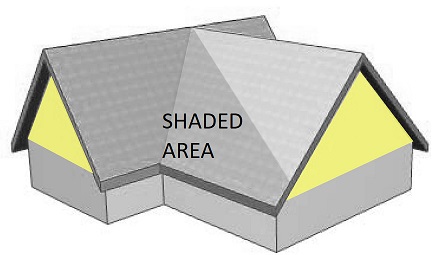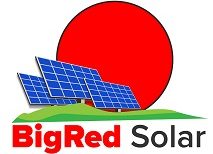Yes, you can install solar at your own home. The process is not too overwhelmingly hard, but you do want to know what you’re doing. You will need to be comfortable with mechanical tasks, electrical work, heavy lifting, doing mathematical calculations, and reading diagrams as well as filling out paperwork.
Here’s what you need before you get started:
- Experience installing electrical wiring.
- Some experience with heights if you’re getting on the roof.
- Ability to follow installation instructions consistently.
- Strong reading comprehension for reading installation manuals.
- Organizational skills to cross-reference between mounting manuals and panel manuals.
- Experience filling out forms to get installation rebates and interconnection permission.
You also need to check some things before you start.
You are only allowed to install your own solar panels in some jurisdictions. Other jurisdictions require a licensed installer or electrician to install your solar panels. Check with your local code organization.
If you don’t want to do it all yourself or think you can’t handle it, you can contact a professional solar installer and get an free quote from Big Red.
Now that you’ve verified that you are allowed to install solar in your area, you need to start getting everything together. You first have several decisions to make. These decisions are about what size solar installation you will install. Note that you may need to make calculations based on your current electric bill and the energy you presently consume.
In some jurisdictions you are not allowed to install more solar panels that you are going to use for your own electric consumption. Or, if you do, you might only get paid 1-2 pennies for the solar energy you generate above and beyond your own usage, which means that you’re basically giving free electricity to the power company. However, most areas have Net Metering, which means that you can generate more solar power during the day than you use, and you can then get that energy back from the grid in at a 100% swap ratio.
How to install solar on my home.
Here’s what you need to ask.
- How many kilowatt hours do you consume.
- How many solar panels do you need to meet that.
- Which solar panel brand will you buy.
- Will you use the cheapest or high-end solar panels?
- What kind of inverter will you get?
These are important questions to start with – don’t skip a single question or you will be in way over your head later when you start researching prices for solar equipment. Think about it this way – if you have never installed a roof before, why would you jump into buying equipment for roofing your own house without knowing what you need? Did you know you might need special ice shielding, minimum thicknesses of insulation, and other items for waterproofing and ice-dam prevention? These are also the kind of things you need to know about when installing solar, but more specific to solar – like how to size an inverter for a solar array.
How many solar panels to install.
First thing’s first, and that’s sizing up your solar needs. You need to know the KWH you use.
If you use 1,000 KWH, you can divide that by a number between 100 and 200 based on your area to determine how many Kilowatts you need to install – between 5 and 10 KW of solar panels will generally power a home needing 1,000 kilowatt hours of electricity.
You need to know the amount of Kilowatts your solar panels must generate. This is typically a number between 5 kW and 20 kW. Larger systems are usually reserved for larger commercial enterprises. However if you live in a mansion, a 25+ kW solar system is not out of the question.
Now you need to determine what solar panels to buy. You have to buy from an online seller of solar panels, and can’t just buy from the manufacturer? Why? Because most manufacturers have minimum orders of solar panels that require you to purchase an entire shipping container of solar panels. This is because the panels are generally manufactured and shipped from foreign countries, often Southeast Asian countries like Taiwan. Even manufacturers that are based in America still use foreign companies for the actual construction of their solar panels, because the cost is so much lower.
When picking a solar panel, look at:
- Actual wattage generated
- Whether it’s 72 or 60 cell will give you an idea of the size.
- What kind of warranty the panel has.
Next you need to know what inverters you want. You need enough inverter power to convert the power from your solar panels into actual electricity. This can be a complicated math calculation, because the peak output of your panels isn’t what your panels will normally produce at all times.
Usually you will want to buy a kit that include the solar panels and the inverters.
Once you’ve decided on that, you then have to verify that those panels will fit on your house.

Note that if you have a house with different kinds of slopes, you may have parts of your house that are shaded most of the year. For example, if you live in the Northern Hemisphere, a lot of panels you install on the north side will receive a lot of shade simply by the shape and design of the roof. You need to verify you have enough space to install your panels.
You also need to know about regulations as to where you can put panels. Did you know you can’t just cover the roof in panels in most places? This is because there are regulations for safety that require minimum gaps that are anywhere from 3 feet to 6 feet away from certain parts of your roof.
Actually installing solar yourself.
Wait, you need to know what kind of product you will attach the panels to your roof with. One of the most common vendors is IronRidge, and they create racking solutions for installing solar on asphalt shingle roofs. So you’ll need to order these as well.
Before you place your orders, you should read the manuals of all the components you have purchased. These manuals will tell you the conditions required for installing those components. You need to make sure everything you order is compatible with everything else. It also needs to have passed certain laboratory tests in order to be allowed.
In the US you can’t just frame up some wood and screw your solar panels down to it. This is dangerous because it doesn’t allow proper structural security during windstorms, and it doesn’t provide proper air flow for a hot day. This might be allowed in some third-world jurisdictions, but it can be dangerous and reduce the operational efficiency of your solar panels.
Warning: Read the manuals BEFORE order your parts.
Next – Installing Your Own Solar
Now the important part I can’t exactly tell you about because you need to read the manual for your panels and mounting equipment. These manuals are often very well written so if you follow them you might not have any trouble, so long as you have experience lifting heavy objects and using hand-tools. Make sure to follow everything and leave nothing out.
The manuals also will have important safety warnings that you must follow. Failure to follow all the directions in the manufacturer’s manuals will make installing panels dangerous as you might miss important structural warnings to make your panels installed to code.
How to get the manuals.
Often you can download the manual for your solar mounting equipment or panels just by Googling “panelname installation manual pdf”. So you can search for “IronRidge Installation PDF” to install IronRidge equipment, as an example.
Enjoy your solar power.
You’ve installed it. You followed all the instructions to the letter. Now you can enjoy your solar power. You will realize savings over just a few short years as you pay yourself back for purchasing the solar panels. You will enjoy free electricity from your solar panels for decades to come, and you’ll rest easier at night knowing you are experiencing clean energy.
